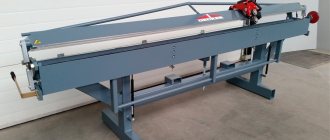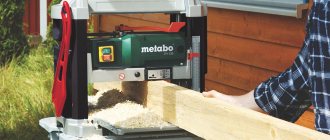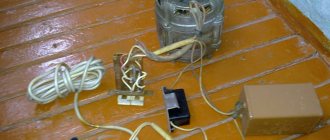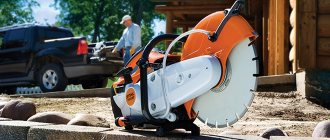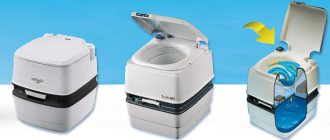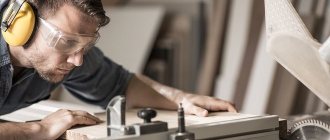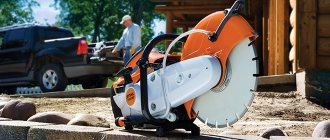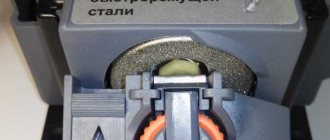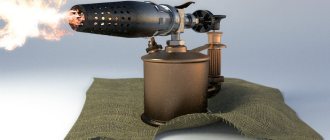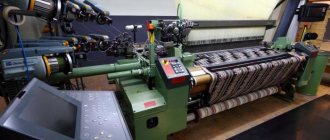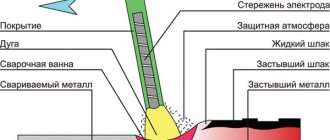Some owners do not know what a sharpening machine is and what it is useful for. Such devices are appropriate to use not only in production, in the workshop, but also in everyday life. The modern market is replete with offers of such devices. To choose the right tool, you need to study its features.
What is a sharpening machine?
Any cutting or chopping tool requires sharpening. However, not all of them can be restored to sharpness using a manual device. This process will take a lot of time, which is why there is an electric sharpener - it sharpens, grinds, and grinds with disc stones of varying degrees of grain. Such equipment works with wood, metal, stone, plastic and other materials that require rough processing.
Grinding machine device
A household mini sharpening machine has the following mechanisms:
- base;
- abrasive discs;
- engine;
- handyman;
- start toggle switch;
- protective screen.
The sharpening machine has functional legs or is fixed to the tabletop. There are abrasive discs on one or both sides of the motor. Their grain size is different, for example, the first is for rough turning, the second is for finishing. The diameter of abrasive stones ranges from 100-250 mm with a thickness of 15-32 mm. Sometimes the circles are covered with a protective plastic box. It protects the master from sparks flying during work.
Sandpaper grit
The main indicator of the quality of the abrasive cloth is the grain size of the working surface. It determines the conditions for its use: preparatory roughing, grinding or polishing of the structure. According to current international standards, the granularity of the material is determined by the number of abrasive grains per square inch of area and is designated by the letter “P” with a number from 12 to 2500. A higher value corresponds to a lower farction rate. The smallest grains are designated by the letter “M” and are measured in microns.
Advice. To make the right choice of sandpaper, it is necessary to take into account both the main classifier and the designations indicated on the back of the canvas.
Why do you need a sharpening machine?
Having learned what sharpening machines are, it is important to understand their wide range of applications:
- Machine for sharpening drills. Capable of sharpening drills of different diameters, different configurations, from different materials, including carbide steel.
- For chains and gasoline or electric saws. When processing, you can select a specific angle and set the depth.
- Sharpening machine for knives and scissors. Tools can be fed onto the wheel at the desired angle.
- Sharpeners-engravers. The equipment combines several sharpening discs and sharpening attachments on a flexible shaft.
Types of sharpening machines
When studying the question of what a sharpening machine is, you should know that there are several options:
- Household
– operates at low power continuously for 20 minutes. After this, a stop is necessary to avoid overheating and damage to the motor. This device is used for sharpening or for one-time editing of tools. The models have little functionality. - Professional
– can work continuously throughout the day. Equipped with a speed switch, it can sharpen at a specific angle. - Industrial
- monolithic construction, often in a floor-mounted design. It has a large diameter of abrasive wheels, suitable for long-term work.
How to choose a sharpening machine?
When choosing a tabletop sharpening machine for household needs, it is worth considering its characteristics:
- Power
. It is presented in the range of 350-1000 W; for a household type model, 500-800 W is enough. Powerful devices consume a lot of electricity, and weak ones cannot handle hard surfaces. - Grinding wheel size and placement
. For a home device, a model with a diameter of 150 mm is suitable. The presence of a pair of discs allows for rough and fine sharpening without replacing parts. - Dimensions and weight of the machine
. When equipping a home workshop, it is better to choose a compact model that can easily fit into a small space.
Sharpening stones for machine tools
The following materials are used for sharpening machines:
- Monocorundum
– for semi-finish sharpening of high-alloy steel tools. - Electrocorundum
– for peeling and black turning, fine straightening of carbon steel surfaces. - Silicon carbide
- this type of grinding wheel for a machine is used when sharpening products made from particularly hard materials, for example, cast iron. - Diamond
- wheels provide the most effective grinding and processing of carbide steel and hairdressing equipment.
When purchasing wheels, you need to pay attention to their grain size. The size of the abrasive is determined by the number - the larger it is, the smaller and more frequent the particles. The most popular range of wheels is with numbers from 16 to 40. When sharpening knives and tools made of hard metal, it is better to use disks of medium and high softness. To break in grinding discs, discs of maximum hardness are needed.
Description and purpose of sandpaper
The base of the product consists of fabric or paper, on top of which an abrasive in the form of grains of hard material is applied using glue or resin. The first sandpaper was used 8 centuries ago. The product was parchment with glued shell rock, fine sand, and various plant seeds. Later, glass began to be widely used as an abrasive.
The main stages of sandpaper production:
- fabric or paper web is treated with polymers (latex or rubber);
- Pre-heated glue (30 - 50 degrees Celsius) is poured over the base;
- take the required abrasive material and sprinkle it on the glue;
- The last step is drying the product.
Rating of sharpening machines for home
When choosing a sharpening machine, you should pay attention to the most popular models:
- ELITECH ST 600C
. Universal machine with a power of 600 W. The abrasives are enclosed in a casing, have a strong fastening, and do not vibrate on the table. It can sharpen both small objects and large parts. - STURM BG6015L
. A machine for household use that processes knives, scissors, axes, chisels, and drills with high quality. The sharpening angle is adjustable, the device is equipped with a lamp on a flexible leg and a protective screen. - DIOLD MZS-0.2
. The best machine for sharpening knives and drills with a power of 220 W, effectively sharpens carbide steel. To secure the equipment, a clamping chuck and a centering system are provided. - Titan BNS 14
. Professional sharpening machine, specially designed for household work - sharpening knives, axes, grinding surfaces. It has neat dimensions and a powerful engine, the number of revolutions is adjustable.
Electrical equipment, light, lighting
0 votes
+
Vote for!
—
Vote against!
Many of us have gardens, vegetable gardens, we all use knives, scissors, chisels, drills, and we often have to sharpen garden tools, be it an ax or a shovel. In order not to spend a long time with sharpening by hand, you need to buy a special machine, which is called household emery. How to choose the right device, and what is recommended to pay attention to? Let's look into this issue now.
- Circle diameter
What is household emery
Emery is a black-green or green-colored rock used as an abrasive material, a mixture of magnetite and corundum. The highest quality emery is mined in Naxos, Galeika, Turkey and Greece. The peculiarity of emery as an abrasive material lies in the presence of fusible impurities, so it can only be used in products that do not require high temperatures for production, that is, on a cold bond.
An important indicator of emery is its abrasive ability, which depends on the corundum content in the rock. The highest corundum content is observed in chloritoid ores, but is 2-3 times lower than in very high-quality corundum ores. As a non-slip element, emery is most widely used for finishing floors, sidewalks and staircases.
A sharpening machine (emery) is a power tool designed for sharpening metal: drills, knives, axes, chisels and scissors, as well as saw blades. The main part of the sharpener body is occupied by an electric motor with a support, which is attached to the workbench using fasteners. The power supply of the device is turned on and off using a special button.
On both sides of the engine, 2 abrasive wheels are placed parallel to each other: one wheel with large grain sizes is intended for rough processing of the material, the other fine-grained one will be needed for fine processing. Abrasive wheels most often have a diameter of 150-250 millimeters and a thickness of 16-32 millimeters. They are partially located in a protective casing. The open part of the circle rotates from top to bottom. The object being sharpened rests on a special stand, the distance from it to the sharpening wheel can be adjusted, and it also rotates towards the wheel at a certain angle.
There are models of electric sharpeners that have a metal disk brush instead of one wheel for preliminary rough processing of the object. Also, some models have additional special slots for drills. To protect against sparks, a special transparent plate called a tap is installed on the electric sharpener. Also, some sharpeners are additionally equipped with a lamp to illuminate the working area of the sharpener.
The very effect of electric emery is that part of the material is removed from the surface being treated. The material usually has a crystalline structure, which wears out during operation in such a way that the smallest particles break off from it, and in their place completely new sharp edges appear, and all due to fragility.
What types of sharpeners are there?
The sharpeners on sale are divided into three classes: professional, semi-professional and household. Their main difference is reliability, which is ensured by the use of certain materials. The household tool is designed for two hours of daily use. Professional sharpeners are designed for constant daily work for 8 hours with mandatory 2 breaks, each 15 minutes. Semi-professional machines, of course, occupy an intermediate position between these two classes.
Also, each class has a wide selection of different designs and modifications of sharpening tools. Of course, these are not only ordinary machines with two circles of various diameters, but also with a non-standard arrangement of circles, for example, placed perpendicular to each other. The most versatile machine is one that is equipped with a sanding belt and a regular disc.
For home needs, a fairly inexpensive sharpener with low speeds is enough - about 120-150 revolutions per minute and a circle that is immersed in a bath of water, that is, “wet”, on which you can slowly give the required sharpness to the cutting and piercing tools in the house quite safely subjects. Such a small emery machine runs on AC power; grinding wheels with an outer diameter ranging from 150 to 200 millimeters and an average thickness of 20 to 40 millimeters are used as an abrasive tool.
There are also models that have an additional brush disk located on one side, most often on the right. It is intended for workpieces that have never been used as a cutting object. First, such a product is cleaned using a brush disk, that is, it is roughly sharpened, and then brought to the desired condition on a grinding wheel with fine grain. A brush disk is also used to remove rust or remove small nicks that remain on the metal after sharpening.
Various metal tools are sharpened on household machines with 2 wheels. But not all models have special slots designed for drills. Some companies are abandoning them to reduce the cost of their products. Also, such grooves are not provided on sharpeners with large disks, which are designed for sharpening thick and large tools, that is, axes and other similar tools.
The induction motors used in modern sharpeners do not require special maintenance and operate quietly. On almost all products, the rotor axis is mounted on ball bearings. Reliability of fastening of grinding wheels, as a rule, is ensured by a regular standard nut.
There are also sharpeners on sale equipped with a sanding belt instead of a second abrasive wheel, which greatly expands the possibilities of using the machine. During operation, the belt moves along with the wheel. This means that with such a belt emery you can not only sharpen all kinds of metal workpieces, but also grind them. If mainly only the sharpening machine is used, then the belt is wasted. Therefore, when there is no need for it, then you need to think about the advisability of buying such a machine for your home, or remove the tape from the sharpener when it is not needed.
Classification of grinding wheels
If you decide to buy an electric sharpener, you need to familiarize yourself with the classification of abrasive wheels for emery. Let's look at which of them are the most popular.
Grinding wheels 25A
Grinding wheels made of electrocorundum are the most popular because they are designed mainly for processing softer metals, that is, they are ideal for home use. This circle is perfect for sharpening axes, scissors, as well as for processing ordinary steel (angles and other products). Most often, electrocorundum circles are white and marked 25 A. It happens that manufacturers add coloring elements, so the circles can be orange or blue.
On such a wheel, when turning ordinary metal, a fairly high-quality sharpening is obtained, because the composition of the wheel is quite soft, during friction the temperature is low, because of this blue scale does not appear on the metal, and if it is not there, then the metal retains its properties perfectly. And this applies, first of all, to cutting objects, for example, knives, because it is quite important not to overheat the metal when sharpening. Therefore, an alumina grinding wheel is an excellent choice for the home.
Before you choose an emery blade, you need to remember that wheels come in different sizes and are designed for different sharpeners. If you buy a circle for home emery, the fit is most often 32 millimeters. The most common sizes of a circle are 200, 175, 150, 125 millimeters in diameter, thickness - 25, 20, 16, 10 millimeters, and fit - 32 millimeters.
Grinding wheels 64C
Green-colored silicon carbide grinding wheels are designed for processing hard alloys (brazing on rotary hammer drills) and tool steel. This material has an increased resistance to abrasion; when sharpening, the temperature is quite high, so if you try to sharpen a home kitchen knife with this circle, then, of course, you will ruin it due to the instantaneous appearance of scale on the knife blade.
This wheel is usually used only for sharpening tools made of special tool steel (P18, P6M6, with the addition of cobalt to steel and hard alloys T15K10, T15K6, BK8). It is not very convenient to sharpen hard alloys, so it is necessary to use the finest grain of an abrasive wheel, but still the best option is to sharpen hard alloys with diamond emery. The marking of such a circle is 64C, and the dimensions are exactly the same as those of electrocorundum.
Vulcanite-based circles
These wheels contain vulcanized rubber with abrasive additives. The most commonly used abrasive is A4 electrocorundum. It is impossible to remove a lot of material on such wheels; they are intended for final processing, removing rust, minimizing burns, as well as removing possible burrs and adding shine.
Volcanic bond emery wheels are manufactured for grinding minerals and metals with a maximum operating speed of 60 m/s. The diameters of the circles are as follows: 125 millimeters, 150 millimeters, 175 millimeters; they are abrasive tools that wear out quite quickly.
Characteristics of electric emery
The shape of abrasive wheels comes in the form of a plate, a cup and a regular straight line. It is recommended to choose it according to the nature of the work performed, as well as depending on the very shape of the workpiece that you will sharpen on the sharpener. The regular straight profile is most often used for many sharpening jobs. There are also special sharpening wheels for sale for saws, the edges of which are made at an angle for ease of sharpening the saw between the teeth.
Circle diameter
Each sandpaper has characteristics such as the diameter and power of the grinding wheel. These parameters are interrelated, that is, the larger the diameter of the abrasive wheel, the more powerful the motor is needed. Let's take a closer look at them.
The diameter of the circle can be large - 200 millimeters, medium - 150-175 millimeters and small - 125 millimeters. Of course, everything depends on the nature of the work being performed. For example, to sharpen a shovel or an ax you need to have stronger emery, so that the diameter is at least 175-200 millimeters, and for sharpening kitchen knives, sandpaper with a circle diameter of 125 millimeters is suitable.
It should be noted that for everyday use, in addition to small circles, they also produce circles that have a larger diameter and are placed on large machines. These circles have fits of 76 mm, 127 mm and 203 mm, and diameters reach 250 mm, 300 mm, 350 mm and 400 mm. These are expensive, large and heavy wheels designed for production.
Power
The more power an electric sharpener has, the harder and coarser materials can be used on it. The household models available for sale have very different power consumption, but on average it is 150-250 W. There are also models with a power of 120 W, and the highest power of a suspended emery can be 400 W.
When sharpening a shovel or an ax, you need to press harder on the wheel than when sharpening a knife, since a low-power engine cannot cope with such a task: if you press hard, the wheel will stop, and this will have a bad effect on its service life. From this it is clear that the larger and heavier the part, the more powerful the sharpening machine is needed.
Planting emery
The seat of the emery is the inner hole of its grinding wheel. At the moment, several specific planting standards are known. The most common fit is 32 millimeters; it is very easy to find an abrasive wheel with this internal diameter. There are also sharpening wheels with a fit of 20 millimeters, 12.7 millimeters and 16 millimeters, which are less common on sale.
The emery must be secured to the table before starting work; mounting bolts are included in the kit so that the emery does not “ride” on the table while working. It would also be a good idea to install the protection included in the kit. To avoid eye injuries, you need to wear special safety glasses. The workpiece must be brought to the rotating grinding wheel only at an acute angle, otherwise the workpiece may be torn out of your hands.
Circle grain
Many people, when purchasing sanding wheels, do not know how the grit is marked. The grain of grinding wheels can be marked 40, 25, 16, 12, 8. The largest is 40, and the smallest is 8. Also, in addition to the numbers, there may be the letters CM, which means a medium-soft wheel, which is not too expensive and is widely used very popular among buyers. It is a little less common to see ST grain (medium-hard wheel) on sale; its cost is noticeably higher, but its abrasion resistance is much higher.
Fine grain (12, 16) is, of course, better to take for precision sharpening. Quite often they buy wheels for sharpening skates 150 8 32 12 CM - these are wheels with a diameter of 150 millimeters, a fit of 32 millimeters, a thickness of only 8 millimeters, the grain is fine, which makes it possible to simply sharpen the tool perfectly.
For example, to install an emery wheel (150 millimeters), it is best to buy a standard SM emery wheel, that is, with a diameter of 150 millimeters, a fit of 32 millimeters, and a circle width of 20 millimeters. Wheels with 25 grit are suitable for sharpening both large tools - axes, and smaller ones - scissors, knives. A standard medium-soft circle (SM) is also suitable for use at home.
Manufacturers
Today the market is quite saturated with electric sharpeners from various manufacturers. “Kraton” and “Zubr” have proven themselves to be excellent. Judging by the reviews of these companies, they produce fairly high-quality sandpaper. You can safely purchase such emery for your household.
Now you know which sandpaper to choose for home use. First, decide which products you will mainly sharpen, then pay attention to the power of the device. Don’t forget to take a closer look at the abrasive wheels, because they have different diameters, thicknesses, fits and grits, and therefore each of them is used in separate situations.
How to make a sharpening machine?
You can make an electric sharpener yourself and use it to sharpen chisels, axes, knives, and scissors. To do this you need:
- Find an old gearbox, a washing machine motor, and a grindstone.
- Make an adapter plate with holes and screw it to the engine.
- Place the gearbox on the engine with the plate and mark with a marker the places where you need to make holes for mounting.
- A plate with a mount for holding the engine is welded to the base of a metal profile.
- Covers are welded on the sides; in one of them you need to make a hole for the power switch.
- A tool rest is made from metal pins, which is attached to the plate. Thanks to bolts and threads, its height can be adjusted or moved to a horizontal position.
- A homemade sharpening machine is ready for use.
- During sharpening, water is poured directly into the tray, which is attached to the base using a magnet.
How to use a sharpening machine?
To work effectively with sharpening equipment and extend the life of consumables, you need to consider the following recommendations:
- Cooling the cutting part with water can improve sharpening of tools.
- Do not turn your home sharpening machine too hot.
- It is recommended to remove the least amount of material in one pass.
- The cutting surface must be brought to the circle as carefully as possible, without pressure.
- If the grinding wheel becomes clogged, it is better to clean it using the sharp edge of a metal object (rather than washing it).
- The cutting blade of the knife is placed against the rotation of the disk.
Tips for choosing a knife sharpening machine
To sharpen knives, it is advisable to use sharpening wheels with a peripheral speed of no more than 15÷20 m/s, since this will avoid overheating and loosening of the blade. At a constant spindle speed of about 3000 rpm, this speed will correspond to a circle Ø100 mm. This parameter has approximately the same meaning on machines with a sanding belt. Accurate setting of the cutting edge angle is best done using special equipment that allows you to hold the knife blade at a given angle relative to the surface of the grinding wheel.
